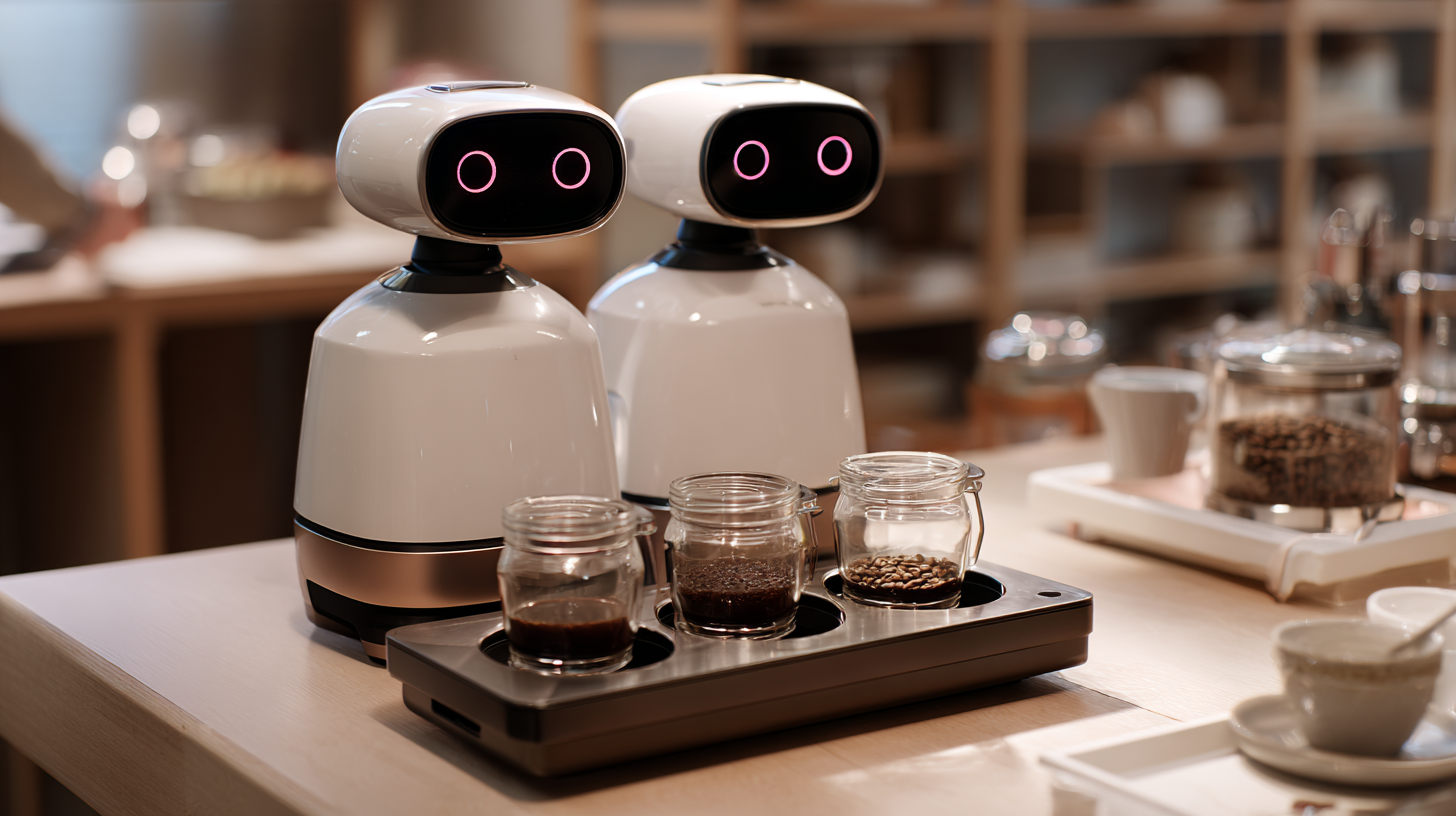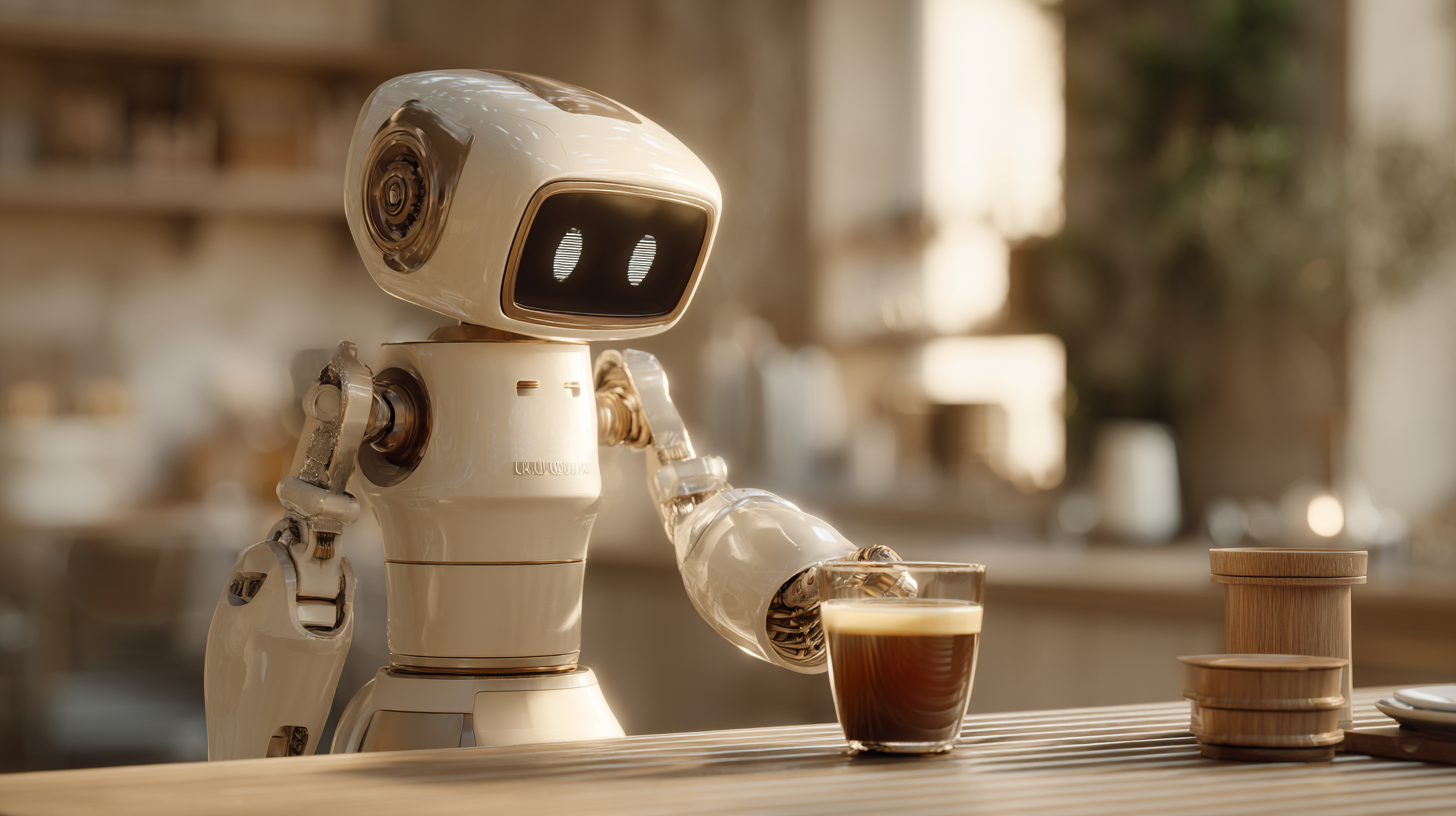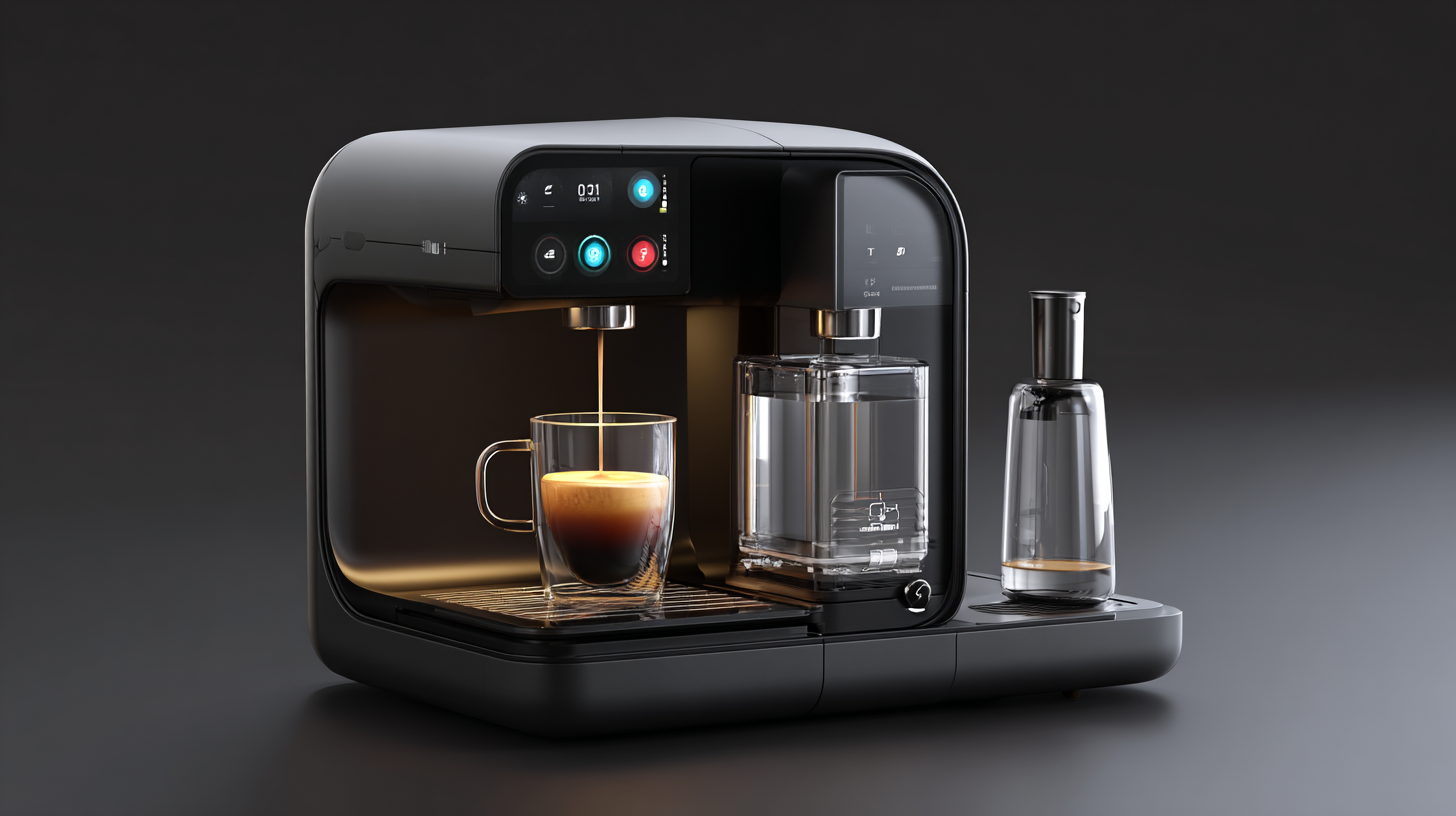Unlocking Excellence: How to Choose the Best Coffee Making Robots Based on Key Technical Specifications
In the rapidly evolving landscape of the coffee industry, the emergence of Coffee Making Robots has revolutionized the way we experience our daily brew. According to recent reports from the National Coffee Association, 79% of Americans now drink coffee regularly, driving a demand for innovative solutions that not only enhance the brewing process but also ensure consistency and quality. With technology advancing at an unprecedented rate, selecting the right coffee making robot has become crucial for both coffee enthusiasts and businesses looking to elevate their offerings. To navigate this growing market, understanding key technical specifications such as brewing capacity, automation features, and smart connectivity options is essential. This checklist will serve as your guide to unlocking excellence in your coffee experience by choosing the best Coffee Making Robots tailored to your needs.

Understanding Coffee Making Robots: Essential Features to Look For
When selecting coffee making robots, understanding essential features can significantly enhance your brewing experience. Key specifications such as brewing speed, temperature control, and programmability play a crucial role in delivering that café-quality cup at home. According to a 2021 report from the National Coffee Association, 62% of coffee drinkers expressed a preference for convenience without compromising on quality. Therefore, investing in a model that offers advanced temperature regulation can ensure that each brew extracts the coffee's fullest flavors.
Tip: Look for machines with customizable brewing parameters. Robots that allow you to adjust steeping time and water temperature can help adapt to various coffee bean profiles, enhancing overall taste.
Additionally, consider the capacity and machine design. A sleek, compact robot can fit comfortably on your countertop, while a larger capacity is ideal for those who entertain frequently. A 2022 industry survey indicated that 45% of users favored models that seamlessly blend aesthetics with functionality.
Tip: Read user reviews focusing on durability and ease of use. A reliable machine should not only perform well but also withstand the daily rigors of coffee preparation, making your investment worthwhile.
Key Technical Specifications That Define Coffee Quality
When it comes to selecting the best coffee making robots, understanding the key technical specifications is vital for ensuring that your coffee experience is flawless. One of the most important factors is the brewing temperature. Coffee brewed at the ideal temperature of between 195°F and 205°F extracts the right flavors and aromas, leading to a consistently rich cup. Look for robots that feature adjustable temperature controls for customization based on your preferences.
Another crucial specification is the brewing time. A coffee maker that brews too quickly may result in bitter flavors while an overly prolonged process might under-extract the coffee. Aim for machines that offer a brewing cycle of around 4 to 6 minutes for optimal extraction. Additionally, take note of the pressure used during the brewing process. Machines that utilize at least 9 bars of pressure are typically better at producing espresso with a rich crema, enhancing the overall quality of your coffee.
Tip 1: When evaluating coffee robots, make sure to read reviews focused on brewing performance and flavor profiles to get insights from other users.
Tip 2: Don’t forget about maintenance features. Robots with self-cleaning cycles make it easier to maintain quality over time, while those with accessible parts allow for more manual upkeep.
Unlocking Excellence: Key Technical Specifications That Define Coffee Quality
Comparing Brewing Methods: Espresso, Drip, and More
When exploring the best coffee-making robots, understanding the nuances of different brewing methods is essential. Espresso, drip, and other techniques each offer distinct flavors and experiences. According to the National Coffee Association, around 63% of Americans enjoy coffee daily. Within that realm, espresso-based drinks have surged in popularity, accounting for approximately 18% of the coffee market in recent years. This brewing method utilizes high pressure to extract bold flavors, making it ideal for lovers of concentrated coffee.
On the other hand, drip coffee remains the most common method in American households, constituting nearly 45% of consumption. This approach is favored for its simplicity and ability to brew larger quantities. For those looking to invest in a coffee robot, consider models that offer customizable brewing options. A recent survey by Statista indicates that equipment with programmable settings enhances user satisfaction significantly, allowing for precise control over brew strength and temperature.
Tips: When choosing a coffee-making robot, prioritize machines that provide a variety of brewing methods. Additionally, pay attention to user-friendly interfaces and durable materials, as these factors can enhance your overall coffee experience. Lastly, always consider the energy efficiency of the appliance to align with your sustainability goals.
Unlocking Excellence: How to Choose the Best Coffee Making Robots Based on Key Technical Specifications - Comparing Brewing Methods: Espresso, Drip, and More
| Brewing Method | Brew Time (Minutes) | Water Temperature (°C) | Grind Size | Yield (mL) | Ease of Use | Maintenance Required |
|---|---|---|---|---|---|---|
| Espresso | 0.25 | 90-95 | Fine | 30 | Moderate | Daily |
| Drip Coffee | 5 | 90-96 | Medium | 180 | Easy | Weekly |
| French Press | 4 | 92-96 | Coarse | 300 | Easy | After Each Use |
| AeroPress | 2 | 85-90 | Fine to Medium | 100 | Very Easy | After Each Use |
| Cold Brew | 12-24 (steep time) | Room Temperature | Coarse | 500 | Easy | Weekly |
Smart Technology in Coffee Robots: Connectivity and Control
 Smart technology is revolutionizing the way we enjoy our daily coffee, and coffee making robots are at the forefront of this trend. With an emphasis on connectivity and control, these machines are designed to provide an exceptional brewing experience. Whether it's through Wi-Fi, Bluetooth, or smartphone applications, modern coffee robots allow users to customize their brewing preferences remotely. This level of connectivity not only enhances convenience but also boosts the overall quality of the coffee-making process.
Smart technology is revolutionizing the way we enjoy our daily coffee, and coffee making robots are at the forefront of this trend. With an emphasis on connectivity and control, these machines are designed to provide an exceptional brewing experience. Whether it's through Wi-Fi, Bluetooth, or smartphone applications, modern coffee robots allow users to customize their brewing preferences remotely. This level of connectivity not only enhances convenience but also boosts the overall quality of the coffee-making process.
In addition to versatility, these robots often feature advanced control systems that make it easy to fine-tune parameters such as grind size, brew temperature, and extraction time. Many models come equipped with user-friendly interfaces, including touchscreens and voice commands, making them accessible regardless of technical skill. As consumers increasingly seek personalization and precision in their coffee, investing in a smart coffee making robot with robust connectivity features is essential. The ability to monitor and adjust settings in real time directly impacts the flavor and aroma of the final cup, ensuring that every brew is a sublime experience.
Maintenance and Durability: Ensuring Longevity in Your Coffee Machine
When investing in a coffee making robot, maintenance and durability are critical considerations that can significantly impact long-term satisfaction and performance. According to a report by the Specialty Coffee Association, 60% of coffee consumers prefer machines that offer easy maintenance features. This preference underscores the importance of selecting a coffee machine that is not only high-quality but also designed for effortless upkeep. Machines with removable brew groups and accessible water reservoirs can greatly simplify cleaning processes, thereby promoting a fresher taste and extending the machine's lifespan.
Durability also plays a key role in the overall value of a coffee machine. A study published by the International Coffee Organization highlighted that the average lifespan of a high-end coffee brewer ranges from 5 to 15 years, depending on its build quality. Investing in a robust machine constructed from stainless steel components and featuring reliable internal mechanisms can reduce the frequency of repairs and replacements. Furthermore, machines that come with extended warranties are often indicative of a manufacturer's confidence in their product's longevity, offering peace of mind to consumers looking for long-term investment options.
